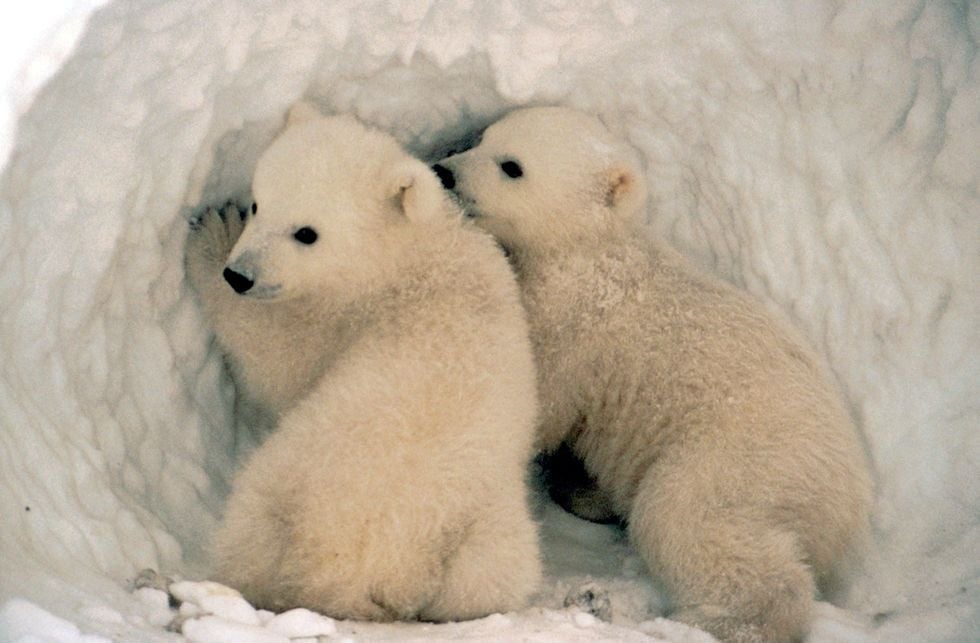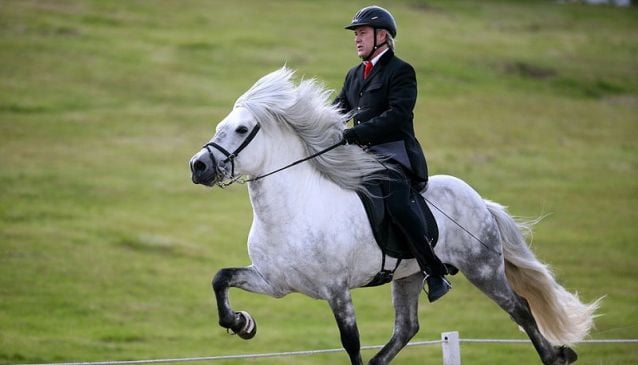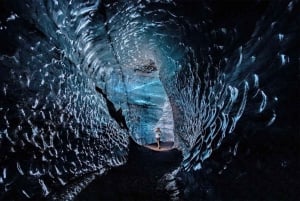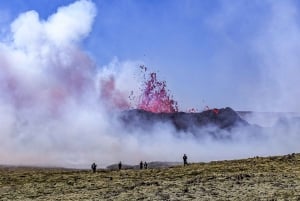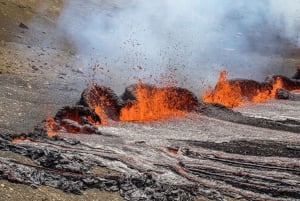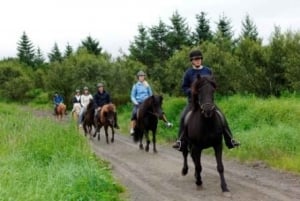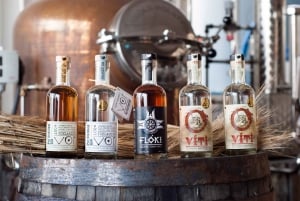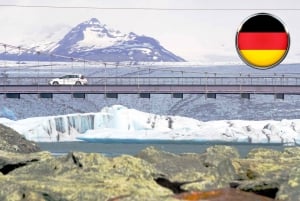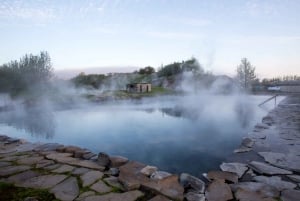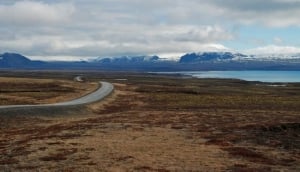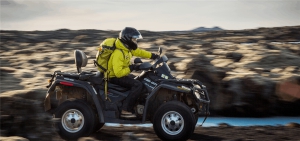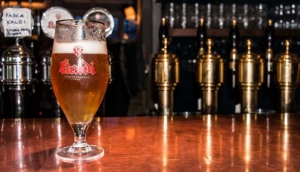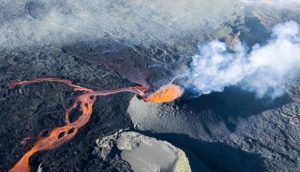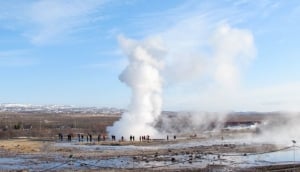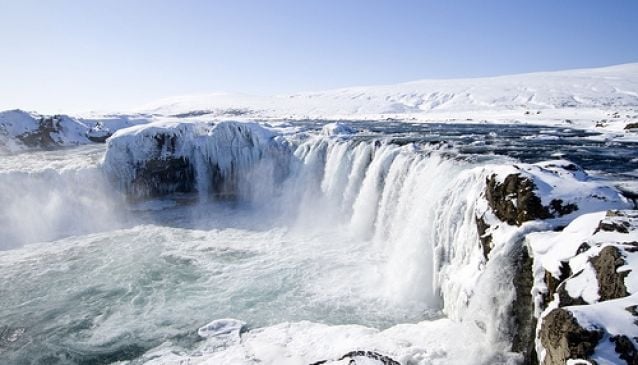Animals in Iceland (Or Lack Thereof)
the foxiest of land animals, the Fox, arrived here on its own via floating ice (or teleportation...)
Book Top Experiences and Tours in Reykjavik:
If youʻre booking your trip to Reykjavik last minute, we have you covered. Below are some of the top tours and experiences!- Reykjavik: Lava Cave, Hot Springs, and Waterfalls Tour
- From Reykjavik: Golden Circle and Glacier Snowmobile Tour
- From Reykjavík: Volcanoes and Blue Lagoon Day Trip
- From Reykjavik: Snæfellsnes Peninsula Full-Day Tour
- Iceland Secret Lagoon Admission Ticket
Ok, first things first. Iceland has no squirrels, no frogs, no snakes, no mosquitos or biting insects of any kind, and only recently, with warming climates, has the tick started making inroads on this fair land.
This is because the island that is Iceland is a rugged piece of land, the product of volcanic eruptions, and located in the middle of the north Atlantic ocean. It is also a relatively young island in geological terms. The sum of these factors makes for an island with a low variety of animals species. We are, whether you like it or not, limited mostly to birds and domesticated animals brought to the island from the mainland and Scandinavia.
* Some of the best birds
Iceland is a bird watcher's paradise; I mean who doesn't like puffins, right?
Speaking of puffins, if you enjoy these cute, awkward looking little birds, one of the best places to visit is the Westman Islands (Vestmannaeyjar) off the southern coast of Iceland. During the summer the entire island is breeding grounds for this little bird as they burrow nests in the cliffs of the island and go fishing for herring in the surrounding sea. One fun fact about Puffins is that they mate for life and use the same nest to breed in year after year. On the downside, our beloved miniature penguins of the north (yes I'm still referring to puffins!) are threatened and the culprits come from land, sea and air alike.
Rabbits are known to destroy puffin nests and seagulls eat their eggs, in addition to which their main food source, herring, is moving further north to colder waters as the sea around Iceland becomes warmer every year. For our part, we in Iceland do have some semblance of pest control, in the sense that there are efforts made by public officials to contain the populations of both rabbits and seagulls.
However, as global temperatures rise, we may need the entire planet to work with us to help reduce the effects of global warming as much as possible. So, if you want to see puffins in Iceland: start making any changes you can to lower your impact!
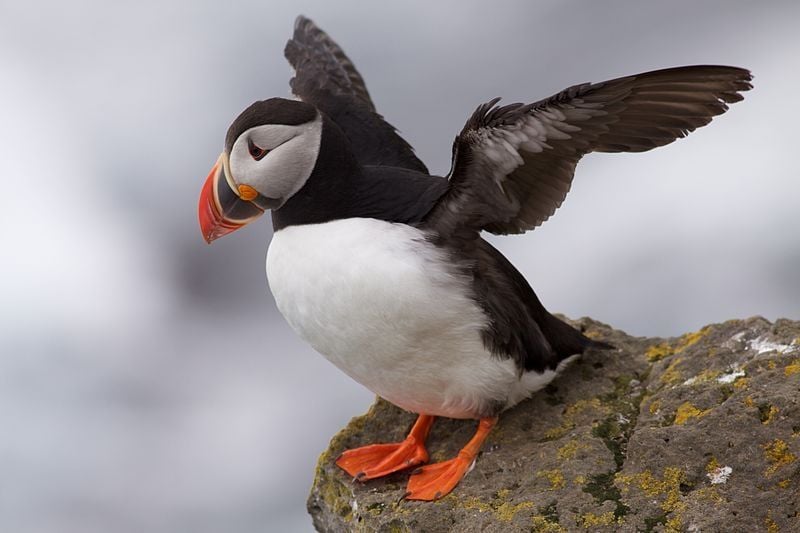
A puffin, or "clown of the air", at Latrabjarg, in the West Fjords of Iceland (Image credit: Wikimedia Commons)
A lesser known, but not less important bird, is the Lóa. This migratory bird is one of the first to arrive in Iceland at the end of winter, and similar to the groundhog in the United States we consider the Lóa to be the signifier of Spring. There is even a lovely song dedicated to the Lóa, which most Icelanders know and are fond of.
The beginning of the text loosely translates to:
"The Lóa has come to take away the snow,
Take away the dreariness, that's what she does..."
Turning away from cute small birds to large ominous ones, the two most popular species would be the sleek black raven and the majestic sea eagle. The raven is likely thought of here in the same way it is thought of elsewhere, as a sneaky, intelligent and conniving prankster. It has also obtained a special place in Icelandic design. The motif of the black raven has been used as a part of jewelry, clothing and even aspects of home decor. You will be hard pressed not to find a raven shaped coat hanger at most homes in the downtown area.
The elusive sea eagle has not yet snuck its way into our designers hearts but it is at the center the heart of most conservationists. This bird is so rare that any sighting of it is likely to make it onto the national news. In fact, a news piece on both a raven a sea eagle appeared in the news recently, when a raven was unafraid to attempt at stealing some animal the sea eagle had just hunted.
News pieces like this one really make it clear exactly how small Iceland is. Happily, though, sea eagle populations have been rising recently, after being a protected species for the past 50 years.
Depending on the time of year, Iceland is a ornithologist's paradise, with over 70 species of birds that nest and lay eggs in Iceland, and over 400 species have been spotted. Since most of the island is uninhabited, and there's only about three natural predators (see below) there's a lot of space for the birds to spread their wings (see what I did there?). These include both migratory birds which nest in Iceland, and others who pass through on their way to breeding grounds elsewhere, since Iceland's central position between Europe and America makes it the perfect place to stop over. In fact the bird that migrates the furthest in the world, the Arctic Tern, tends to breed in Iceland or Greenland, before flying a roundabout route to Antarctica for reasons beyond everyone but themselves.
* But, so, who eats all the birds?
Besides us deplorable humans who go out and shoot these majestic beasts of the sky (not all the species obviously), the foxiest of land animals, the fox, is natural predator number one. It is also the only land animal that came here and settled on its own, about 10.000 years ago, presumably via floating ice. (That or teleportation, we don't really know). The arctic fox is remarkable in that it changes colour, being white in the wintertime and brown in the summer.
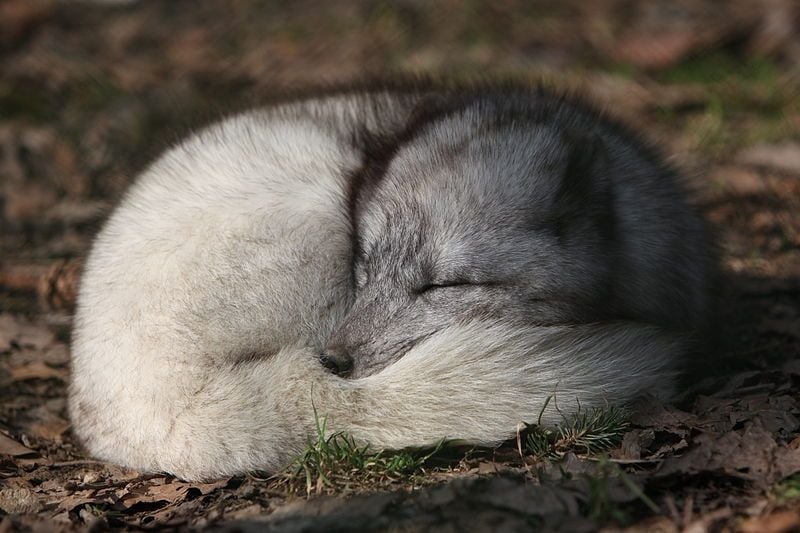
The foxiest of all land animals: the Fox. This cute little furball is actually a vicious and savage predator. D'awwwwwwww... (Image source: Wikimedia Commons)
Besides the fox, the mink is likely to be the other big predator, however, unlike the fox, it was brought to Iceland as a farm animal and used for its fur. (Then they escaped, because, of course they did). Today they are an unwanted pest in the countryside as they are hungry devious little creatures. As a matter of fact they are the only animals in the world besides humans who will hunt something even if they're not hungry. Just for the heck of it!
* Aquatic Mammals
The oceans around Iceland is known to be home to 23 different species of whale, dolphin and porpoise. Amongs these is the blue whale, Minke whale, Humpback whale, White-beaked dolphin, Harbour porpoise and Orca. You can either watch them, learn about them in museums, or eat them at one of Iceland's fine restaurants, if that's your fancy.
* Húsdýragarðurinn
We cannot boast about having a proper zoo, but we have a damn fine petting zoo. Most, if not all, Icelandic children will go to Fjölskyldu og Húsdýragarðurinn (Family Park and Petting Zoo) regularly. When the park was first opened the objective of the city council of ReykjavÃk was to create a space in which the common city dweller could come in contact and become acquainted both with wild animals present in Icelandic nature and the domesticated ones we raise in farms. This includes all the animals you would expect to find in a petting zoo, like cows, horses and sheep. More exciting though are the seals (there are sometimes baby seals there!) and some wild animals like foxes.
* Domesticated Animals
Icelanders are profoundly fond of the animals we brought into the country when first colonizing the island. These include the famous Icelandic horse and sheep, but also the lesser known dog, goat and chicken. All these particular breeds known as the Icelandic breeds, have been selectively bred and have maintained the same traits as the original animals that were first brought to the island.
- The Icelandic Horse â the âmost essential servantâ
The Icelandic horse has become quite popular outside of Iceland for being easy going and friendly. In fact, all these animals (except possibly the chickens) are known for having good tempers.
This breed of horse is unique in more than its temperament, as it is the only horse breed in the world that can perform five gates, where most horse breeds can only use three or four. Besides being able to perform the common gates of walk, trot and canter they can also do pacing and what is called tölt. Tölt is a sped up version of walking, however it is much more impressive as the horses lift their front legs up quite high, similar to what you would expect from the Spanish step in larger breeds, and only one foot is touching the ground at any given time.
The Icelandic horse has historically been essential to Icelanders as a mode of transportation and as help on the farm. Nowadays most horses are bred to fulfill certain qualities that make them desirable as either a riding horse or a competition horse. Riding around our dramatic landscapes on the same horse breed that vikings rode on will be sure to provide a ball of a time!
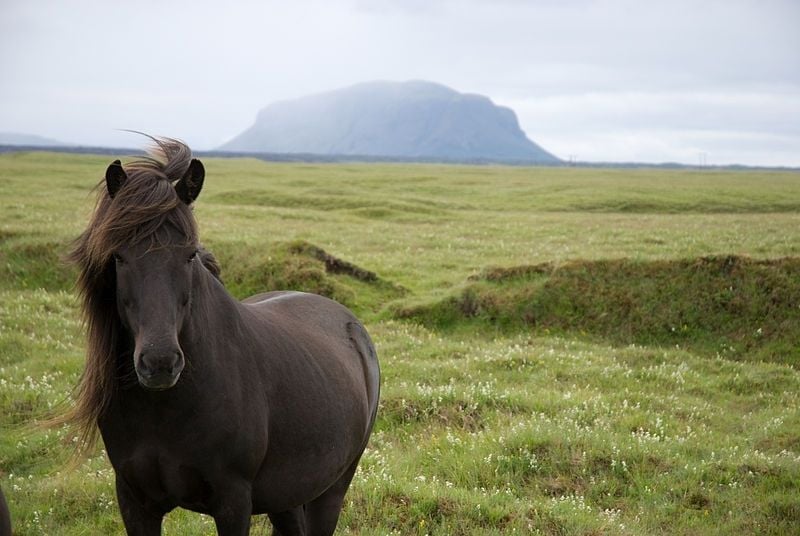
Icelandic horse out in the beautiful countryside of Iceland. (Photo credit: Wikimedia Commons
- Icelandic Goats
Once, a few months ago, when visiting one of very few goat farms in Iceland, I encountered a goat that acted much more like a dog than a goat. It literally jumped up at me putting its little hoofs on my chest. It then proceeded to rub its head against my legs and follow us around. Though I cannot promise that all goats will act this way, I can promise that this particular goat will and you can visit it yourself!
The farm Háafell has been farming goats in Iceland for decades now and is one of the few farms keeping this particular breed of goat alive and well. They create all sorts of fun products from their milk and the goats themselves, and if you visit you can meet these little darlings in person.
- Icelandic Sheep
The sheep can be friendly, but usually they are quite dumb and skittish, and will more likely than not try to run away from you as fast as possible. That being said, they are a particularly attractive breed of sheep and produce wool which is perfect for cozy warm sweaters that will keep you insulated from the cold. The reason for the ultra insulating capacities of Icelandic wool is our weather, as the sheep have water repellent long hairs towards the outside and closely packed and very fine, small hairs closer to the skin which provide extra warmth. The Icelandic sheep is also widely known around the world for being super tasty, or rather the lamb is known for being tasty (you don't want to eat old sheep meat...).
Once again the rugged, breathtaking Icelandic nature comes forth as the fairy dust from otherworldly awesomeness as one of the main reasons for the succulent-ness of our lamb is thanks to the fact that during the summers sheep and their baby lambs roam the wilderness and eat up all the juicy grasses and wild herbs growing in the high lands. Now you know why we have severe corrosion in some areas of the island, but hey, at least we eat good meat!
- Icelandic Dog
The lovely and kind Icelandic dog has been used as a sheepdog since the beginning of civilization here and is remarkably intelligent and energetic. One strange bonus fact: I have it on good authority that the mark of a well bred Icelandic dog (among others of course) is when it has a total of twelve tows on its front paws. Unfortunately I was never informed as to why, however I am certain of being able to trust the source. Otherwise this breed of dog is very attractive in a normal way. Possibly its cutest aspect is its tail, which is bushy and has a lovely spiral quality to it.
- Settlement Hen
Lastly, the darling chicken, called 'Landnámshæna' in Icelandic (meaning, the settlement chicken) is almost by some unwritten rule not eaten, or at least you can't buy one at a supermarket. They are bred for their good looks and as an ode to the chickens of the past, the original settlement chickens. The difference between these chickens and the ones we eat is drastic, as they have not been bred or genetically modified to grow faster or fatter, but rather for their appearance and may I say style. They are quite stylish and prance around very elegantly. This breed, much like the Icelandic goat, was very near extinction a few decades back until some romantic farmers starting to breed them anew and over time it has become a popular side hobby for more and more farmers.
Because these animals have been isolated since settlement, there are unusually strict rules regarding the importing of animals into the country. Mainly it is a great way to ward off livestock disease. Thanks to this we largely escaped the mad cow disease scare some years back. Some cases are so extreme, as in that of horses, as it has been illegal to import any horses into the country for the last thousand years. Even a horse that is originally from Iceland may not return to the country once it has left.
Though this discourse on the fauna of Iceland does not capture all of the species we boast, these are perhaps the most commonly thought of by Icelanders as being the best our nation has to offer. No polar bears, sorry.
